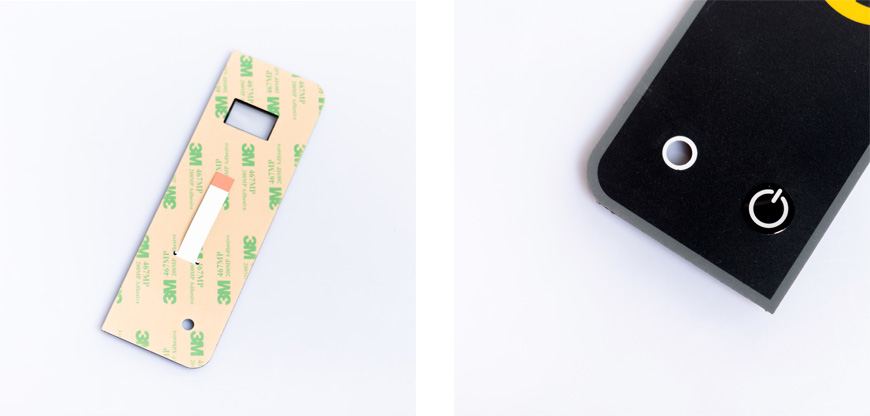
Non-tactile membrane switches are a cornerstone in modern electronics, offering both functionality and sleek design. These switches come primarily in two configurations: four-layer and six-layer structures, each with unique characteristics. This article explores these differences, shedding light on their specific applications and advantages.

Description and Components
The four-layer non-tactile membrane switch typically consists of a graphic overlay, a spacer, a printed circuit, and a rear adhesive layer. This structure is distinguished by its printing of conductive silver points on the back of the panel, with the circuitry located in the third layer.
Key Differentiators
1. Conductive Pathway: In the standard four-layer structure, touching the overlay leads to circuit completion, a design widely used due to its simplicity.
2. Printing Considerations: Special attention is given to the printing process, including the addition of UV dots to prevent unintended circuit completion.
3. Spacer Thickness: The thickness of the adhesive spacer layer is maintained between 0.05 to 0.1 mm.
4. Capacitive Circuit Option: A cost-effective variant uses capacitive circuitry. While this lowers production costs, it requires higher precision in IC design.
Description and Components
In contrast, the six-layer structure adds two more layers: a rigid backer and a tactile layer. Here, the conductive silver points are printed on the third layer's PET circuit, with the fifth layer hosting the standard circuitry.
Key Differentiators
1. Circuit Stability: The positioning of silver points and additional layers in the six-layer structure enhances circuit stability.
2. Cost Implication: Though more stable, this design incurs a higher production cost.
3. Capacitive Circuit Option: Similar to the four-layer structure, a capacitive circuitry option is available, balancing performance with cost.
Four-Layer vs Six-Layer
The primary difference lies in the structural complexity and circuit stability. The four-layer structure, commonly used due to its cost-efficiency, is well-suited for applications where budget and simplicity are key. On the other hand, the six-layer structure, with its enhanced stability and durability, caters to more demanding environments.
Considerations for Selection
Selecting between the two structures depends on factors like cost constraints, application environment, and specific functional requirements. The four-layer structure is prevalent due to its cost-effective nature and is typically favored in applications where cost-control is a priority.
In conclusion, both four-layer and six-layer non-tactile membrane switches have their distinct advantages and applications. Understanding these differences is crucial for designers and engineers to make informed choices, ensuring the right balance between cost, functionality, and performance.
PREV